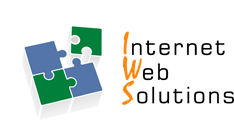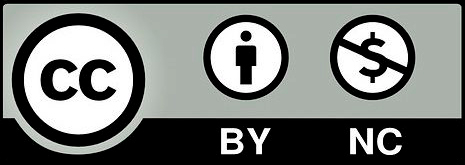 Money and Means of Payment Money and Means of Payment
Functions and use of money Click to read Click to read
|
Money is the legal means we use to buy goods and services or to pay obligations. It is hard to think that there was a time when money did not exist. The truth is that thousands of years ago nobody used it. In order to obtain the goods they needed, people in ancient times used barter, i.e. they exchanged one thing for another. Later, money took many different forms: from metals such as gold and silver to today's coins and banknotes.
|
 |
Money has three functions:
- Means of payment or exchange. For example, when you go to a shop and buy a shirt, the shop assistant hands you the shirt you have chosen and you hand over the money it costs.
- Store of value: money allows it to be accumulated for future payments. The part of money that is not spent today, but saved for future spending, is called savings.
- Unit of account or measure: just as we use the metre to measure the length of objects, money allows us to determine the price of any good in terms of an amount of money. Everything is valued in money, which allows us to compare the value of different goods.
Alternative means of payment: The bank card Click to read Click to read
It is a payment instrument issued by a financial institution. With the card, you can pay instantly, as if you were carrying physical cash on you, withdraw money from ATMs (Automated Teller Machines) and even finance the purchase of goods and services in the short term. It is also the most widely accepted means of payment for online purchases.
The bank card is made of plastic and is rectangular in shape. They can come in many different designs and colours, but they must meet certain standards:
| FRONT |
REVERSE |
- The name of the financial institution at the top.
- Branding and acceptance logos on the right hand side (Visa, Mastercard).
- Chip.
- The personal account number (PAN) or card number. It is in the middle and has 16 numbers.
- Card expiry date. This consists of the month and year and is usually requested when making online purchases. It is located below the card number.
- Name of the Holder.
|
- The magnetic stripe: it occupies the entire width of the card, although its use has now been replaced by the chip.
- Signature panel. This is where the holder signs.
- CCV or CVV number, or security number. These are three digits to the right of the signature panel and are usually requested from the holder when making online purchases.
|
 |

|
|
1- Logo issuing entity
2- Security chip
3- Contactless
4- PAN 16 digits (unique)
5- Expiry date
6- Name of card holder
7- International brand (Visa, Mastercard)
|
8- Magnetic stripe
9- Signature panel
10- Code for e-commerce transactions (3 digits)
11- Contact details of the issuing entity
|
Types of bank cards Click to read Click to read
- Debit card: Allows ATM transactions and payments in shops. They must be linked to an account and you can only use them to withdraw the balance of the current account to which they are associated. In other words, the amount of the purchase or the money withdrawn from an ATM is immediately debited from the account. It is usually used to pay daily expenses, withdraw cash from an ATM or make online payments.
- Credit card: You can carry out the same transactions as with a debit card, but they also allow you to withdraw more than the balance of the current account to which they are associated, as they are in fact granting a credit that is available to the cardholder. Payments are usually due at the end of the month and give the option of either paying the full amount (without interest) or deferring part of the payment over a longer period (which usually carries interest that can be high). In case of late payment or non-payment of instalments, banks usually charge fees and commissions.
- Revolving cards: They are similar to credit cards but differ in the method of payment. Purchases or cash withdrawals you make with this card are always automatically deferred with generally high interest rates, while credit cards you can choose to defer payment to the end of the month or the following month and do not charge interest.
- Prepaid cards: You can only spend the amount of money previously deposited on the card. Once the card balance has been spent, it can be recharged as many times as necessary (normally with a minimum of €6 and a maximum of €1,000).
- Virtual card. This is the virtual version of the prepaid card. It is specially designed for online purchases. It does not include the card plastic, i.e. only the card number and security codes are available. As it is a prepaid card, you only need to top it up before using it with the amount you think is convenient. From then on, any purchase made online can be charged to it, up to the limit of the balance that has been topped up.
- Contactless cards: are cards, both debit and credit, which can be used to make payments simply by bringing them close to the payment terminal and, in the case of transactions of more than 50 euros, by entering the pin number.
What is electronic banking and what about online banking? Click to read Click to read
|
Electronic banking: Electronic banking is a system that allows most banking operations to be carried out electronically, from opening a bank account to making any transfer, however small, and includes Online Banking. Thus, for example, electronic banking is withdrawing money from an ATM, using credit cards or telephoning a bank branch, while online banking is banking from a computer or mobile device using an Internet connection.
On the other hand, a virtual bank is a bank that does not have a branch.
|
 |
Ways you can pay with your mobile phone Click to read Click to read
|
NFC (Near Field Communication) technology. It is a short-range wireless technology that allows data to be transmitted between two devices in close proximity. So, if our phone has the NFC chip, and it is linked to our bank cards, we can use it to pay in physical shops. All you need to do is bring your phone close to the shop's payment terminal to make the payment.
|
 |
|
Immediate payments: are those in which the money is available in a few seconds, almost in real time, in the beneficiary's account, at any time of the day and every day of the year. They work after downloading the APP offered by banks (or any other payment service) and associating a mobile phone number or email address. With this, the operation can be carried out simply by indicating the mobile phone number of the person to whom you want to send the payment, which will be settled in a matter of seconds. Both parties must be signed up to the system for it to work. An example of this service is Bizum.
|
 |
|
PayPal: Based on a system of email accounts. For this you have to associate a credit card to your PayPal account, when you want to pay, simply log in with your email and password, this way you don't have to enter your financial data.
|
 |
What is an ATM? Click to read Click to read
|
The main function of the ATM is to provide immediate access to cash 24 hours a day and it is used by savings book, debit or credit card. You can also use the ATM to consult accounts and balances, make deposits, make transfers, buy tickets for events, top up telephone and transport payment cards, etc.
It is important that you take into account the fees that you may be charged for operating with an ATM of another bank or belonging to another ATM network, or for withdrawing money on credit instead of debiting it from your current account.
|
 |
What is a direct debit used for and when is it used? Click to read Click to read
|
Direct debit is a form of payment, with which the bank is instructed to take care of the invoices that we are going to receive periodically. It is usually used for the payment of recurring services, such as school fees, electricity, water, telephone, entertainment, etc.
|
 |
What is a bank transfer? Click to read Click to read
|
These are transactions that occur when a person instructs his or her bank to withdraw money from his or her account and deposit it into another person's account at the same or a different bank. The big difference with a direct debit is that transfers are one-off payments and not regular payments. You can make a transfer, for example, to pay for a course enrolment fee. Or you can receive a transfer as a wedding present. Each bank charges different fees for making a transfer.
|
 |
 Summing up Summing up
Summing up Click to read Click to read
 |
Functions of money
Means of payment/ exchange, store of value and unit of measure.
|
 |
 |
Types of bank cards
Debit, credit, revolving, prepaid, virtual and contactless.
|
 |
How to pay with your phone
NFC, instant payment (such as Bizum) and PayPal.
|
 |
The ATM
Allows immediate access to cash 24/7 via savings book, debit or credit card.
|
|

 Money and Means of Payment
Money and Means of Payment Click to read
Click to read 








